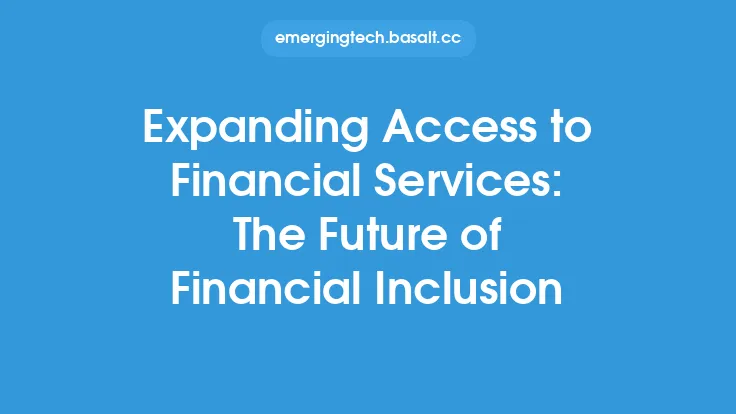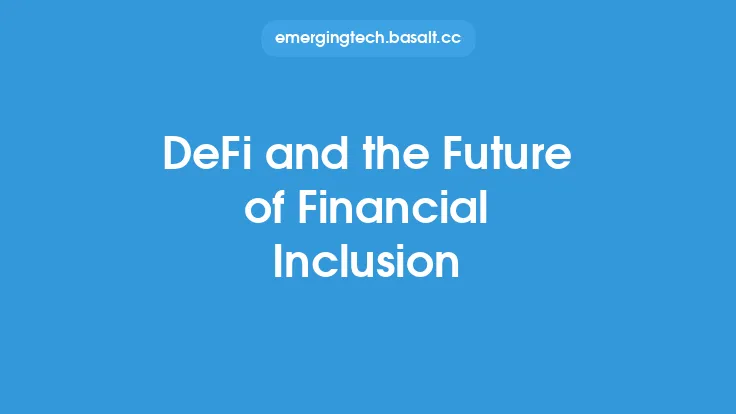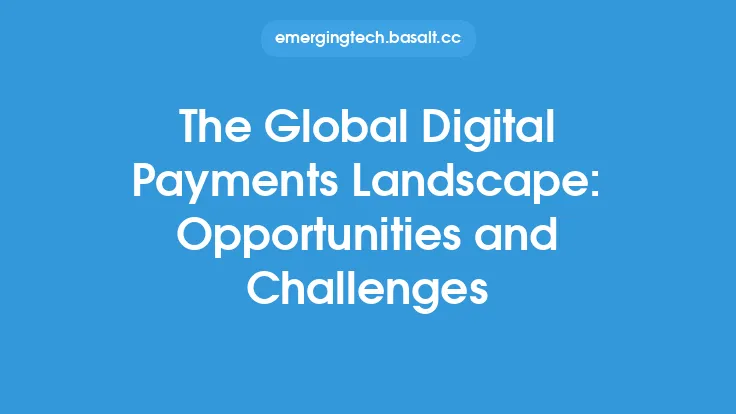The concept of financial inclusion has gained significant attention in recent years, as it is widely recognized as a crucial factor in promoting economic growth, reducing poverty, and improving living standards. However, despite the progress made, a substantial portion of the global population remains excluded from formal financial systems, and the digital divide has emerged as a major obstacle to achieving universal financial inclusion. In this article, we will delve into the relationship between financial inclusion and the digital divide, exploring the gaps that exist and the potential solutions that can be implemented to address them.
Introduction to Financial Inclusion
Financial inclusion refers to the access to and use of formal financial services, such as banking, credit, and insurance, by individuals and businesses. It is a vital component of economic development, as it enables people to manage their finances effectively, invest in their future, and mitigate risks. Financial inclusion can be achieved through various channels, including traditional banking, mobile banking, and digital payment systems. However, a significant proportion of the global population, particularly in developing countries, lacks access to these services, and the digital divide has exacerbated this problem.
The Digital Divide and Financial Inclusion
The digital divide refers to the disparity in access to and use of digital technologies, such as computers, smartphones, and the internet, between different populations. This divide is particularly pronounced in developing countries, where many people lack access to digital infrastructure, such as internet connectivity, and digital literacy. The digital divide has significant implications for financial inclusion, as digital technologies are increasingly being used to deliver financial services. Without access to digital technologies, people are unable to access digital financial services, such as mobile banking and online payment systems, which are often more convenient and affordable than traditional banking services.
Barriers to Digital Financial Inclusion
Several barriers exist that prevent people from accessing digital financial services, including:
- Lack of digital infrastructure: In many developing countries, digital infrastructure, such as internet connectivity and mobile networks, is limited, making it difficult for people to access digital financial services.
- Digital illiteracy: Many people, particularly in developing countries, lack the skills and knowledge needed to use digital technologies, such as computers and smartphones.
- Cost: Digital technologies, such as smartphones and internet connectivity, can be expensive, making them inaccessible to many people.
- Security concerns: People may be hesitant to use digital financial services due to concerns about security and privacy.
- Regulatory barriers: In some countries, regulatory frameworks may not be in place to support the development of digital financial services.
Solutions to Address the Digital Divide
To address the digital divide and promote financial inclusion, several solutions can be implemented, including:
- Investing in digital infrastructure: Governments and private sector companies can invest in digital infrastructure, such as internet connectivity and mobile networks, to expand access to digital technologies.
- Digital literacy programs: Organizations can implement digital literacy programs to teach people the skills and knowledge needed to use digital technologies.
- Affordable digital technologies: Companies can develop affordable digital technologies, such as low-cost smartphones and mobile devices, to make digital technologies more accessible.
- Secure digital financial services: Financial institutions can implement secure digital financial services, such as encryption and two-factor authentication, to protect users' personal and financial information.
- Regulatory reforms: Governments can implement regulatory reforms to support the development of digital financial services and protect consumers.
Role of Fintech in Addressing the Digital Divide
Fintech, or financial technology, has the potential to play a significant role in addressing the digital divide and promoting financial inclusion. Fintech companies can develop innovative digital financial services, such as mobile banking and online payment systems, that are more convenient and affordable than traditional banking services. Fintech companies can also use digital technologies, such as artificial intelligence and machine learning, to improve the efficiency and security of digital financial services. Additionally, fintech companies can partner with traditional financial institutions to expand access to digital financial services and promote financial inclusion.
Case Studies of Successful Digital Financial Inclusion Initiatives
Several successful digital financial inclusion initiatives have been implemented around the world, including:
- M-Pesa, a mobile banking service launched in Kenya in 2007, which has expanded access to financial services for millions of people.
- Paytm, a digital payment system launched in India in 2010, which has enabled people to make payments and transfer money using their mobile phones.
- bKash, a mobile banking service launched in Bangladesh in 2011, which has expanded access to financial services for millions of people.
Conclusion
In conclusion, the digital divide is a significant obstacle to achieving universal financial inclusion, and addressing this divide is crucial to promoting economic growth, reducing poverty, and improving living standards. By investing in digital infrastructure, implementing digital literacy programs, and developing affordable and secure digital financial services, we can expand access to digital financial services and promote financial inclusion. Fintech companies have a significant role to play in addressing the digital divide, and successful digital financial inclusion initiatives have been implemented around the world. By working together, we can bridge the digital divide and achieve universal financial inclusion.





